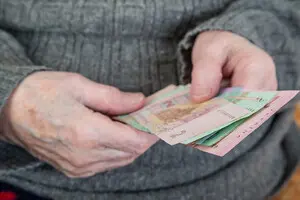How to stop "sitting on trillions" and revive business lending
The share of loans in the structure of financing capital investments in Ukraine is at the level of 5–7%, and more than 75% of financial resources for the development of the enterprise are found at the expense of own sources. But no economy can develop without the so-called effect of credit leverage, and we are no exception. So, let's consider how we can get out of this impasse.
How should leverage work?
The algorithm here is quite simple: the loan rate must be lower than the profitability of production, then the company taking the loan has the resources both to repay it and to service it. What's more, even then, companies receive additional profit on borrowed funds.
But if the loan interest rate is higher than the company's profitability, it not only leads to losses, but also paves a direct path to the laundering of working capital and eventually to bankruptcy.
If the National Bank of Ukraine (NBU) discount rate is now 13%, then market credit for the company will cost somewhere around 20% or even more.
The actions of the National Bank of Ukraine (NBU) can be compared to the work of a doctor: he looks at the patient and understands that his actions according to the protocol will kill the patient with a 100 percent probability, but no one will blame him for the patient's death. On the other hand, it is possible to go against the protocol, and the patient will survive, but there is a 10% chance of death from complications, and then the doctor will have to go to prison. In addition, it is worth noting that the doctor treats according to the protocol, and the National Bank of Ukraine (NBU) increases the rate to 25%.
However, despite active military operations on the territory of our country, there is a great demand for loans: for relocation, for energy saving and energy efficiency programs (against the shortage and high cost of energy resources), for import substitution of those goods that have become unavailable, for structural restructuring of the economy under martial law, for the fulfillment of a defense order, for the partial restoration of business processes.
As for the monetary model
How did the monetary transmission function before the war? There was a discount rate of the National Bank of Ukraine (NBU), which served as a benchmark of money prices for the national economy of Ukraine. Let's denote the discount rate as X — this was the core of the transmission, the "neutral gear".
The bank refinancing rate from the National Bank of Ukraine (NBU) was higher than it: it was defined as X plus 2% ("first transfer") and formed the cost of active operations of the National Bank of Ukraine (NBU) (crediting of the banking system by the regulator).
However, there was also a rate on deposit certificates of the National Bank of Ukraine (NBU): it was defined as X minus 2% ("reverse gearing") and formed the cost of passive operations of the National Bank of Ukraine (NBU), i.e. the income of the regulator's attraction of bank funds (the rate of immobilization of the free liquidity of the banking system).
During the war, the specified transmission was destroyed. At the discount rate X, the rate on certificates of deposit is now not X minus 2%, but X plus 2.5% (it was plus 3%), and the refinancing rate is X plus 3%.
This actually brought the National Bank of Ukraine (NBU) discount rate to the lowest horizon, and the deposit certificate rate almost reached the very top of the monetary transmission, namely higher than the discount rate, which made banking operations with certificates of deposit of the National Bank of Ukraine (NBU) the most profitable business in Ukraine.
Of course, there is no question of lending under such conditions.
And what should the leadership of the National Bank of Ukraine (NBU) do?
First of all, it would be worthwhile to fix the discount rate for a certain period (one-and-a-half years) at a fairly low level (10%) in order to create a credit-monetary impulse for the growth of the economy in the range of 8-10% annually (although there are also limiting factors in the form of a shortage of labor resources and energy).
At the same time, at the macro level, the outflow of capital is completely blocked, in particular due to the restructuring of debts to such structures as the International Monetary Fund (IMF). At the same time, at the micro level (cash foreign exchange market), the free circulation of capital is maintained within certain limits.
Excess liquidity is cut with the help of state financial instruments, but with a yield of "the accounting rate minus 2%, that is, if the accounting rate is maintained at 10%, the yield of such instruments should be at the level of 8%, which would significantly reduce the state's expenses for servicing the public debt (now it is almost UAH 300 billion).
One of the incentives for such investments by banks in state financial instruments (some may call them "marker" bonds) should be the permission to form part of the required reserves of banks at the expense of these securities.
The fact is that now, when banks attract funds from individuals and legal entities in national and foreign currency, they must form a certain level of mandatory reserves, namely reserve the appropriate amount of money in their correspondent account with the National Bank of Ukraine (NBU).
In order for these funds to work, banks can be allowed to form part of the reserves in the form of government bonds (now this is partially done, namely by investing in the benchmark- domestic government bonds of Ukraine (DGBU). However, it is worth noting that this is happening against the background of high, not low interest rates on such instruments. After all, the yield of the current benchmark-domestic government bonds of Ukraine (DGBU) is at the level of 15%, not 8%, as in the version described above).
In the proposed model, high inflation and devaluation risks against the background of low interest rates (at the level of inflation and below) are mitigated with the help of a high level of reservation of funds raised by banks — up to 50% of the funds raised on current accounts to the request funds from clients — individuals. At the same time, it ensures the financial stability of banks.
But then how to start the lending process? After all, a high reserve ratio is a low indicator of the bank multiplier, that is, the ability of banks to create "new money" with the help of credit issuance.
In order to start the lending process, it is necessary to allow banks to form part of the reserves in the form of lending for capital investments and programs for the creation of factories for the processing of agricultural and natural raw materials.
For example, the bank attracted UAH 100 from customer funds to the request funds from clients. In this model, the bank must reserve 50%, or UAH 50. But it is also worth noting that out of these 50 UAH the bank forms reserves in the form of balances on its correspondent account with the National Bank of Ukraine (NBU) at the level of only UAH 10. The rest of the reserves can be formed by the banking structure in the form of investments in the domestic government bonds of Ukraine (DGBU) "markers" (20 UAH) and loans for capital investments (20 UAH). By the way, it is possible to attract government guarantees here.
At the same time, the National Bank of Ukraine (NBU) automatically reserves instead of such a private or state bank the equivalent of its reserves in the amount of UAH 20, which, accordingly, were previously formed at the expense of lending by such a bank to the accumulation of fixed capital. This is necessary so that the created reserves really cover the bank's obligations and are liquid.
That is, the National Bank of Ukraine (NBU) carries out deferred monetary financing (it is activated only in case of non-repayment of the loan and outflow of liquidity from banks), and banks receive resources for their own credit emission due to the provisioning rate. In addition to this situation, it is important that the banks, not the state, determine the appropriate borrowers (the state only determines the profile of such a borrower and the general lending strategy, namely only capital investments, only the gross accumulation of fixed capital in the economy).
Of course, banks may not provide loans to anyone. But then, based on our example, they will be forced to form UAH 20 of reserves at the expense of the balances on their correspondent account with the National Bank of Ukraine (NBU) in the form of reserved funds, which will not bring them any income.
Examples with real numbers
At the beginning of 2024, loans granted to legal entities in the portfolio of banks amounted to UAH 528 billion, and as of August, they increased to UAH 574 billion, or only by UAH 46 billion (the devaluation of the hryvnia also played a role here. After all, it was the hryvnia that influenced the increase in the hryvnia equivalent of foreign currency loans).
At the same time, the funds of individuals increased from UAH 1,083 billion to UAH 1,142 billion over the same period (funds on demand — from UAH 694 billion to UAH 738 billion).
The new reservation model (if it is allowed to be applied to the entire amount of funds raised from the population, and not only to new receipts on accounts) would lead to the fact that 50% of the requested funds from clients, or UAH 571 billion, would be subject to reservation.
More than 114 billion UAH should be reserved as "live money" in the correspondent accounts of banks with the National Bank of Ukraine (NBU), 228 billion — in the form of investments in "marker" domestic government bonds of Ukraine (DGBU) at 8% (at a discount rate of 10%) and another 228 billion UAH — in the form of loans for the gross accumulation of fixed capital in the economy.
At the same time, the process of credit issuance can be extended for a year. This will make it possible to increase the volume of lending by 228 billion UAH (5–6 billion dollars), and this will be the lending of capital investments of Ukrainian businesses in the amount of 3% of Gross domestic product (GDP) (in general, the indicator of gross accumulation of fixed capital at the expense of all sources should be equal to 20–25% of Gross domestic product (GDP)).
In this case, the credit issue of banks under the guarantee of "deferred monetary financing of the National Bank of Ukraine (NBU)" can amount to 5% of Gross domestic product (GDP). Another 15% of Gross domestic product (GDP) should be provided by other sources: own funds of companies, state investments, foreign investments, etc.
This will make it possible to overcome the eternal problem of credit dysfunction of the banking system (mental traumas of the banking collapse of 2014-2015). In addition, it will help to simultaneously preserve the stability of the banking system and minimize inflationary and devaluation risks. Until now, the National Bank of Ukraine (NBU) has not managed to combine all three options in one bottle, and lending itself has been sacrificed.
Otherwise, our banking system will continue to "sit on trillions" of customers' money, like a person who does not use anything, but at the same time does not give it to others, investing in certificates of the National Bank of Ukraine (NBU) of deposit or super-profitable benchmark-domestic government bonds of Ukraine (DGBU), that is, earning from the state, rather than creating a credit impulse in the economy.
Read this article in Ukrainian and russian.
Please select it with the mouse and press Ctrl+Enter or Submit a bug


















 Login with Google
Login with Google